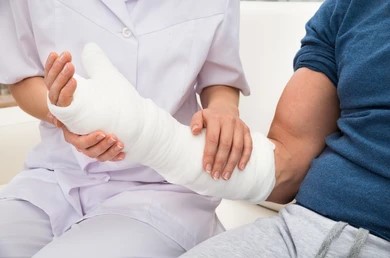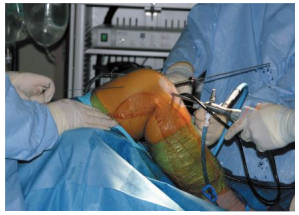Fractures and trauma can occur due to various reasons, including falls, accidents, sports injuries etc. Common types of fractures include:

- Stable Fracture
- Open (Compound) Fracture
- Transverse Fracture
- Oblique Fracture
- Stress Fracture
The broken ends of the bone line up and are barely out of place.
The bone pierces the skin, increasing the risk of infection.
A horizontal fracture line across the bone.
The bone shatters into three or more pieces.
A small crack in the bone often caused by repetitive force or overuse.
Trauma can also lead to soft tissue injuries, such as ligament sprains, tendon tears, and muscle injuries, which often accompany fractures.
Treatment Offered: Surgical and Non-Surgical Treatments

Dr Ganesh Shirsath’s expertise in trauma and fracture surgery ensures that patients receive the best possible care, whether through surgical or non-surgical means. His patient-centered approach and advanced techniques help achieve optimal outcomes and promote a swift recovery.
Non-Surgical Treatments
- Casting
- Bracing
- Traction
- Physiotherapy
Using a plaster or fibreglass cast to immobilize the bone and allow it to heal.
Providing support and stability to the injured area with a brace.
Stiffness and pain in the shoulder joint.
Rehabilitation exercises to restore strength and mobility after the bone has healed.
Surgical Treatments
- Open Reduction and Internal Fixation (ORIF)
- External Fixation
- Intramedullary Nailing
- Capsular Release
- Bone Grafting
Surgically realigning the bone and securing it with metal plates, screws, or rods.
Stabilizing the bone with a metal frame outside the body, connected to the bone with pins.
Inserting a metal rod into the marrow canal of the bone to keep it stable.
Cutting tight ligaments to improve shoulder movement in frozen shoulder cases.
Using bone from another part of the body or a donor to repair and rebuild damaged bone.